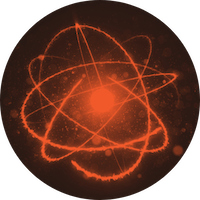INDIRECT CALORIMETRY

The method of indirect calorimetry is the most accurate commercially-available method to measure how many calories you burn – and require – each day. This information is the key to understanding your body’s metabolism. Having access to this data has been life-changing in many people.
TASKS REQUIRE ENERGY FROM FOOD
Right now, as you read this, your body is performing countless tasks: your heart is pumping blood; your lungs are inhaling and exhaling air; your brain is processing information, plus hundreds of other tasks. Each one of these tasks requires energy to be performed – the more tasks your body is performing, the more total energy is needed to be input into the system.
To obtain the energy for these tasks, we eat food. The energy inherent in foods is contained in the CHEMICAL BONDS of the fat, carbohydrate, and protein molecules that we ingest. Think of a chemical bond as a tiny stick of dynamite – while dynamite contains an enormous amount of energy, that energy only becomes available when we explode the dynamite.
In a similar fashion, the chemical bonds in our food are broken by the digestive enzymes in our GI tract, and energy is released in the form called calories. These calories are redirected to ultimately create another energy form called ATP, which is the universal energy currency of every cell in our body.
ATP is the final energy form that our body cells utilize to perform their respective tasks.
CONVERSION OF FOOD TO ENERGY REQUIRES OXYGEN
The process of breaking the chemical bonds in food, releasing energy, and creating ATP requires oxygen, as signified by the technical name of the process: oxidation (or more specifically, oxidative phosphorylation in the mitochondria). So, the purpose of humans breathing in oxygen is to create the energy we need for all the tasks our body has to perform. This is reflected in the following formulas:
C6H12O6 + 6 O2 = 6 CO2 + 6 H2O + ATP (oxidation of glucose)
C16H32O2 + 23 O2 = 16 CO2 + 16 H2O + 129 ATP (oxidation of palmitic acid)
C72H112N2022S + 77 O2 = 63 CO2 + 38 H2O + SO3 + 9 CO(NH2)2 (oxidation of albumin)
To illustrate this, Think about a time when you were engaged in strenuous exercise. We breathe faster and deeper to bring more oxygen into our system so we can create more energy to power the workout. So, our oxygen uptake is correlated to our energy demand.
PRECISELY MEASURE OXYGEN INTAKE TO CALCULATE ENERGY DEMAND
Since oxygen uptake and energy demand are linked, we can accurately calculate energy demand by measuring oxygen uptake.
The measurement of calories burned is predictable because the Weir equation shows that our body will burn 4.8 kcal for each Liter of oxygen we consume. Because of this direct relationship, measurements of oxygen uptake and caloric burn rate are virtually interchangeable.
The KORR indirect calorimeter contains at its core a precision air flow sensor that measures the volume of inhaled/expired air and an oxygen sensor that measures the concentration of oxygen, humidity and temperature.
This number is measured for 10 minutes, then multiplied by 144 to extrapolate for calories burned in 24 hours
The final calculated number is referred to as Resting Energy Expenditure (REE), Resting Metabolic Rate (RMR) or Basal Metabolic Rate (BMR)
